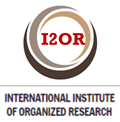Caracterización Clínico-patológica y epidemiológica del papiloma invertido nasosinusal en el INOR 1999-2009.
Texto completo:
PDFResumen
En el presente trabajo se realizó un estudio descriptivo retrospectivo, para caracterizar el espectro clínico, anatomopatológico y epidemiológico del papiloma invertido, desarrollado en el Instituto Nacional de Oncología y Radiobiología (en lo adelante INOR), en el periodo enero 1999 a diciembre 2009. El universo de estudio, estuvo conformado por 17 pacientes con diagnóstico anatomopatológico de papiloma invertido nasosinusal, los cuales fueron intervenidos mediante técnicas abiertas, practicándose rinotomías laterales y maxilarectomías parciales o totales según la necesidad. La recolección de la información se obtuvo revisando las historias clínicas de estos pacientes y revisando los libros de recogida de datos de anatomía patológica y del salón de operaciones. Los resultados fueron sometidos a análisis estadístico. La carencia de información y caracterización del objeto de estudio conforman el antecedente fundamental de la presente investigación. La autora no pretende abarcar aquí todo el campo de la investigación, sino que el mismo forma parte de un diseño investigativo de mayor envergadura.
Palabras clave
Referencias
Lampertico P, Russel WO, MacComb WS (1963), Squamous papiloma of the upper respiratory epithelium. Arch Pthol 75: 293-302.
Ward N.A mirror of the practice of medicine and surgery n the hospitals of London. London hospital Lancet 1854; 2:480-2.
Brown B. The Papillomatous tumours of the Nose. J Laryngol Otol1964; 58:889-96.
Ringertz N. Pathology of malignant tumours arising in nasal and paranasal cavities and maxilla. Acta Otolaryngol 1938; 27:31-42.
Respler DS, Jahn A, Pater A, Pater MM (1987) Isolation and characterization of papilloma virus DNA from nasal inverted papillomas Ann Otol Rhmol i aryngol, 96 170 172.
Ogura H, Fuzlwara T, Hamaya K, Salto R (1995) Detecnon ofhuman papilloma v~rus 57 in a case of inverted nasalpapdlomatosls m Japan Eur Arch Otorhmolaryngol, 252 type (8 )513-5.
Hyams VJ (1971). Papillomas of the nasal cavity and paranasal sinuses. A clinicopathological study of 315 cases. Ann Otol Rhinol Laryngol 80: 192-206.
Rajeevan MS, Swan DC, Nisenbaum R,et al Epidemiologic and viral factors sociated with cervical neoplasia in HPV-16-positive women. Int J Cancer 2005; 115:114–20.
Gunnell AS, Tran TN, Torrang A, et al. Synergy between cigarette smoking and man papillomavirus type 16 in cervical cancer in situ development. Cancer Epidemiol Biomarkers Prev 2006; 15:2141–7.
Ndoye A, Dolivet G, Leroux A y cols. Erradication of p53-mutated head and neck squamous cell carcinoma (HNSCC)xenografts using nonviral p53 gene therapy and photochemical internalisation (PCI). J Clin Oncol (Meeting Abstracts) 2005; 24: Abst. 3155.
Herrero R. Chapter 7: Human papillomavirus and cancer of the upper aerodigestive tract. Natl Cancer Inst Monogr. 2003; (31):47-51.
Wiley DJ, Wiesmeier E, Masongsong E, et al. Smokers at higher risk for undetected antibody for oncogenic human papillomavirus type 16 infection. Cancer Epidemiol Biomarkers Prev 2006; 15:915–20.
Katori H, Nozawa A, Tsukuda M. Increased expression of matrix metalloproteinase-2 and -9 and human papilloma virus infection are associated with malignant transformation of sinonasal inverted papilloma. J Surg Oncol 2006; 93:80–5.
Xi LF, Koutsky LA, Castle PE, et al. Relationship between cigarettes smoking and human papilloma virus types 16 y 18 DNA Load. Cancer epidemiol biomarkers prev 2009; 18 (12) December 2009.
Tolstrup J, Munk C, Thomsen BL, et al. The role of smoking and alcohol intake in the development of high-grade squamous intraepithelial lesions among high-risk HPV-positive women. Acta Obstet Gynecol Scand 2006; 85:1114–9.
Alam S, Conway MJ, Chen HS, Meyers C. The cigarette smoke carcinogen benzo[a]pyrene enhances human papillomavirus synthesis. J Virol 2008; 82:1053–8.
Xi LF, Koutsky LA, Castle PE, et al. Human papillomavirus type 18 DNA load and 2-year cumulative diagnoses of cervical intraepithelial neoplasia grades 2-3. J Natl Cancer Inst 2009; 101:153–61.
Mohanty R, Dubey KP, Das SK, Chawla SC. Sinonasal inverted Schneiderian papilloma a Clinical report. Indian Journal of Otolaryngology and Head and Neck Surgery. 2004; vol 56. No 2, April-June 2004.
Krouse JH. Endoscopic treatment of inverted papilloma: safely and efficacy. Am J Otolaringol 2001; 22: 87-89.
Kjaer SK, Munk C,Winther JF, Jorgensen HO, Meijer CJ, van den Brule AJ. Acquisition and persistence of human papillomavirus infection in younger men: a prospective follow-up study among Danish soldiers. Cancer Epidemiol Biomarkers Prev 2005; 14:1528–33.
Chao J-C, Fang S-Y. Expression of epidermal grow factor receptor in the inverted papilloma and squamous cell carcinoma of nasal cavity. Eur arch Otorhinolaryngol (2008) 265: 917- 922.
Christian VA, Partrick JB (2007) Risks of malignancy in inverted papilloma of the nose and paranasal sinuses. Curr Opin Otolaryngol Head Neck Surg 15:95–98.
Leon B (2002) Schneiderian Papillomas and Nonsalivary Glandular Neoplasms of the Head and Neck. Mod Pathol 15(3):279–297.
Simen-Kapeu A, Kataja V, Yliskoski M, et al. Smoking impairs human papillomavirus (HPV) type 16 and 18 capsids antibody response following natural HPV infection. Scand J Infect Dis 2008; 40:745–51.
Vaccarella S, Herrero R, Snijders PJ, et al. Smoking and human papillomavirus infection: pooled analysis of the International Agency for Research on Cancer HPV Prevalence Surveys. Int J Epidemiol 2008; 37:536–46.
Syrjanen K, Shabalova I, Petrovichev N, et al. Smoking is an independent risk factor for oncogenic human papillomavirus (HPV) infections but not for high-grade CIN. Eur J Epidemiol 2007; 22:723–35.
Herrero R, Castle PE, Schiffman M, et al. Epidemiologic profile of type-specific human papillomavirus infection and cervical neoplasia in Guanacaste, Costa Rica. J Infect Dis 2005; 191:1796–807.
Knowles MA, Habuchi T, Kennedy W, Cuthbert-Heavens D (2003) Mutation spectrum of the 9q34 tuberous sclerosis gene TSC1 in transitional cell carcinoma of the bladder. Cancer Res 63:7652–7656.
Xi LF, Kiviat NB, Hildesheim A, et al. Human papillomavirus type 16 and 18 variants: race-related distribution and persistence. J Natl Cancer Inst 2006; 98:1045–52.
Xi LF, Edelstein ZR, Meyers C, Ho J, Cherne SL, Schiffman M. Human papillomavirus types 16 and 18 DNA load in relation to coexistence of other types, particularly those in the same species. Cancer Epidemiol Biomarkers Prev 2009;18:2507–12
Han JK, Smith TL, LoenriT, et al. An evolution in the management of sinonasal inverting papilloma. Laringoscope 2001; 111:1395-1400.
Lund VJ. Optimun management of inverted papilloma. J Laryngol Otol 2000; 114 (3): 194-7.
Klimek T, Atai E, Schubert M, Glanz H. Inverted papilloma of the nasal cavity and paranasal sinuses . Clinical data, surgical strategy and recurrences rates. Acta Oto-Laryngol (Scand) 2000; 120 (2): 267-72.
Bertrand B, Eloy P, Jorissen M, et al.Surgery of inverted papillomas under endoscopic control. Acta Oto-Rhino-Laryngológica Belg 2000; 54 (2): 139-50.
Keles N, Deger K. Endonasal endoscopic surgycal treatment of paranasal sinus inverted papilomas-first experiences. Rhinology 2001; 39 (3): 156-9.
Thorp MA, Oyarzabal-Amigo MF, Du Plessis JH, Sellars SL.Inverted papilloma: A review of 53 cases. Laringoscope 2001; 111: 1401-1405.
Lyngdoh NC, Ibohal TH, Marak IC. A study on the clinical profile and management of inverted papilloma. IJO & HNS. 2006; Vol. 58, No 1, Jan- March 2006.
Iwata T, Inoue K, Nishiyama N, et al. Pulmonary inverted Schneiderian papilloma causing high serum levels of carcinoembryonic antigen and squamous cell carcinoma- Associated antigens report of a case. Surg today 2007; 37: 790-793.
Iwata T, Inoue K, Nishiyama N, et al. Pulmonary inverted Schneiderian papilloma causing high serum levels of carcinoembryonic antigen and squamous cell carcinoma- Associated antigens report of a case. Surg today 2007; 37: 790-793.
Knowles MA. Molecular pathogenesis of blader cancer. Int J Clin Oncol (2008) 13: 287-297.
Enlaces refback
- No hay ningún enlace refback.
Copyright (c) 2020 MULTIMED

Esta obra está bajo una licencia de Creative Commons Reconocimiento-NoComercial-CompartirIgual 4.0 Internacional.










